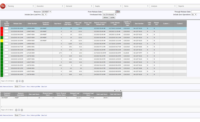When consumers eat has become as important as how and what consumers eat, according to “Eating Trends: Mealtimes and Snacking,” a report released by Packaged Facts, Rockville, Md.
The study shows how mealtimes and dining patterns increasingly deviate from the longstanding tradition of "three square meals."
"There's a surging fluidity to modern mealtimes," says David Sprinkle, research director. "The reality is U.S. adults are increasingly eating differently, if not necessary eating less."
Survey data reveals that as of 2018, a far higher share of adults consider breakfast to be the most important meal of the day compared with lunch or dinner. Even so, the percentage considering breakfast to be most important has edged downward since 2008, with lunch and dinner each gaining more priority.
Research also found that the percentage of adults who eat several smaller meals throughout the day edged up slightly from 2008 to 2018. Notably, some essential and increasingly influential consumer demographic segments showed a greater likelihood than average toward eating several smaller meals throughout the day, including Hispanics, African-Americans and women.
The data further reveals a modest but marked trend toward eating meals later. Between 2008-2018, there's been a slight drop in the percentage of adults who eat breakfast before 9 a.m., lunch before 1 p.m., and dinner before 8 p.m. Gen Z adults (18- to 24-year-olds) are among the most noteworthy diners who tend to eat in later dayparts. Asian-Americans and Millennial adults between ages 25- to 34-years-old are disproportionately more likely to eat later in the evenings.


